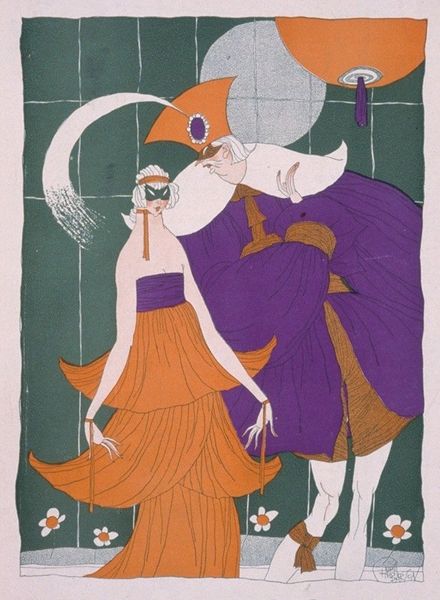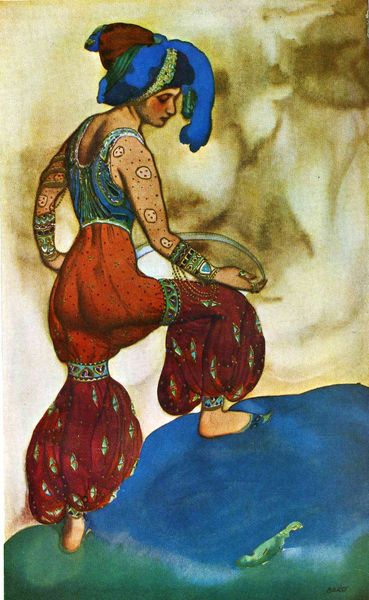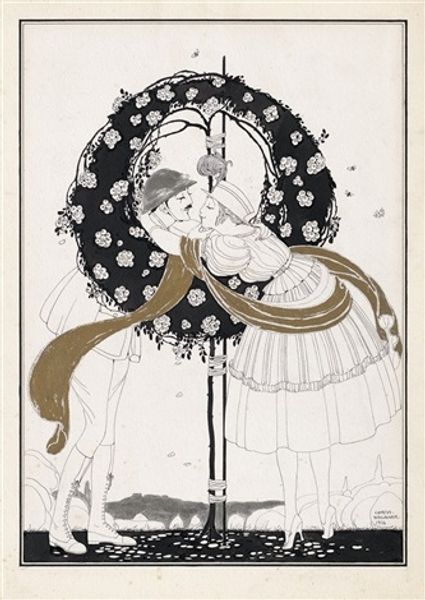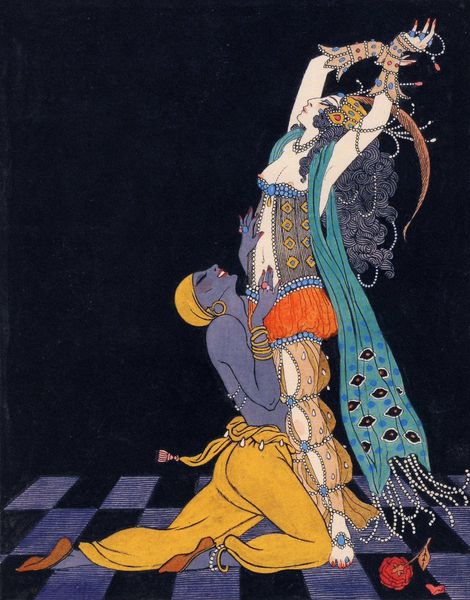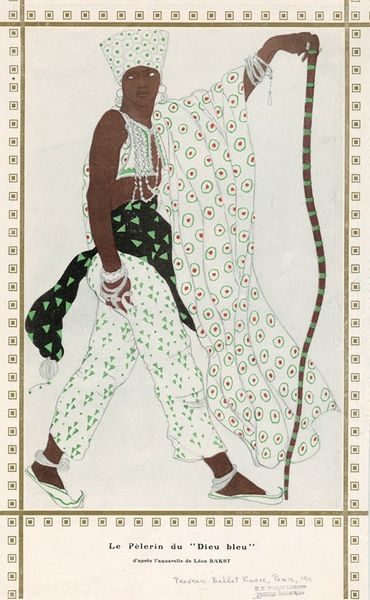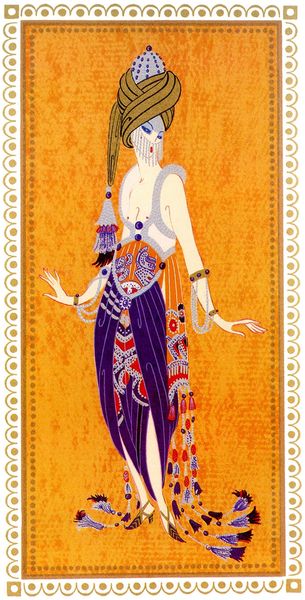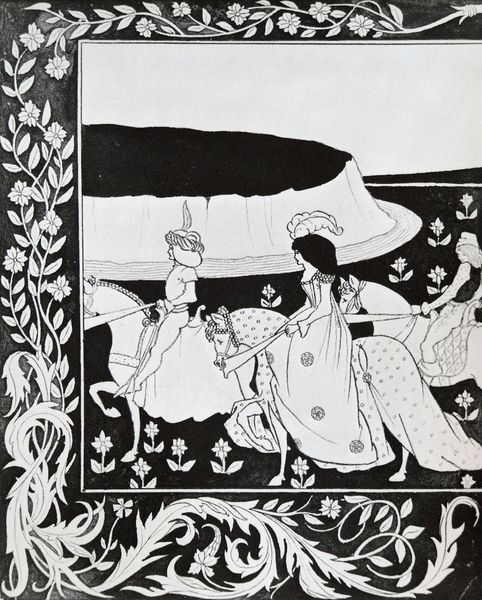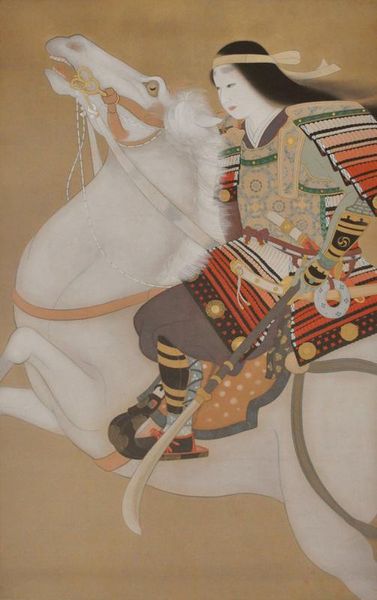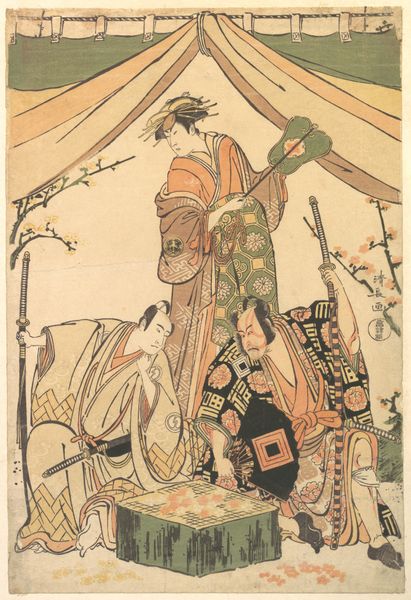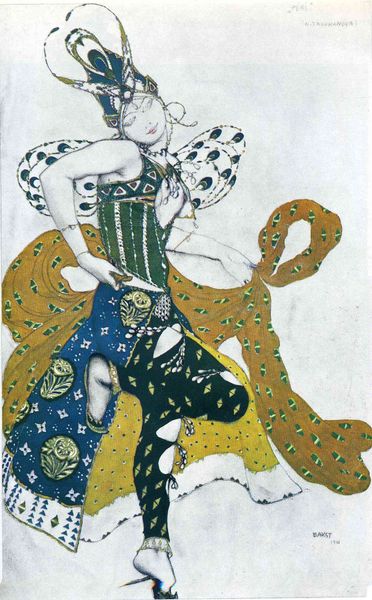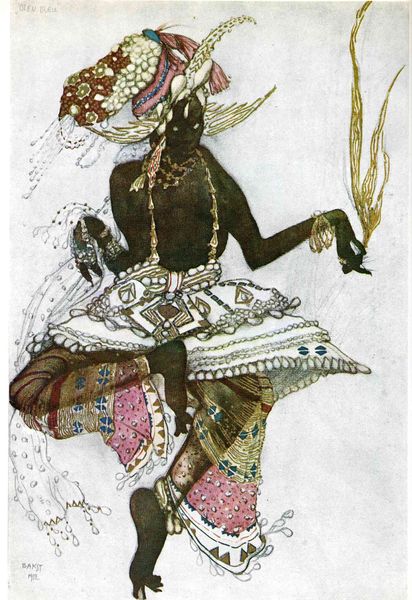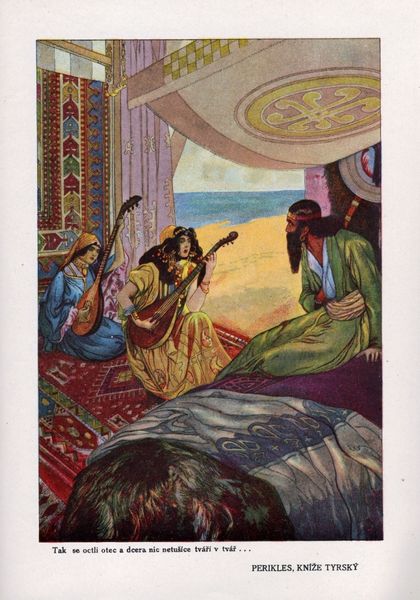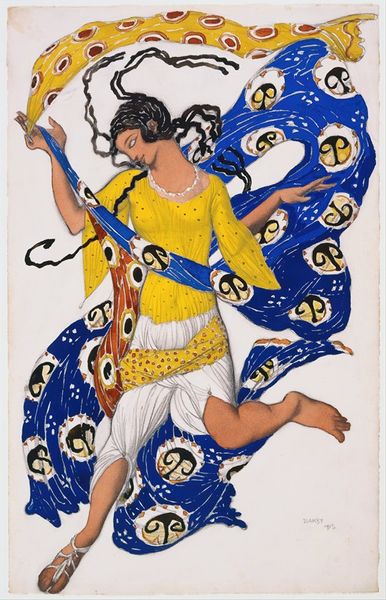
drawing
#
drawing
#
art-nouveau
#
caricature
#
figuration
#
symbolism
#
history-painting
#
erotic-art
Copyright: Public domain
This pochoir print by George Barbier captures Vaslav Nijinsky and Ida Rubinstein in Schéhérazade, Paris, around 1910. The opulence is striking: jewels, flowing fabrics, and the intimate pose suggesting exotic eroticism. The rose, held delicately by Rubinstein, is far more than just a flower. Throughout history, the rose has symbolized love, beauty, and, significantly, secrecy. Think of "sub rosa"—under the rose—denoting confidentiality. Here, in the context of Schéhérazade, the rose whispers of hidden desires and untold stories, a visual echo of the tales within tales of the Arabian Nights. Consider Botticelli's Venus, adorned with roses, a symbol of divine love, or the rose windows of Gothic cathedrals, radiating spiritual light. Yet, the rose also carries the weight of mortality, a reminder of beauty's fleeting nature. This duality reflects a collective consciousness, an understanding that beauty and decay are eternally entwined, a sentiment deeply embedded in our cultural psyche. The symbolism engages viewers on a deep, subconscious level. The rose is not merely a symbol but a complex network of cultural memory, continuously resurfacing and evolving across epochs.
Comments
No comments
Be the first to comment and join the conversation on the ultimate creative platform.
